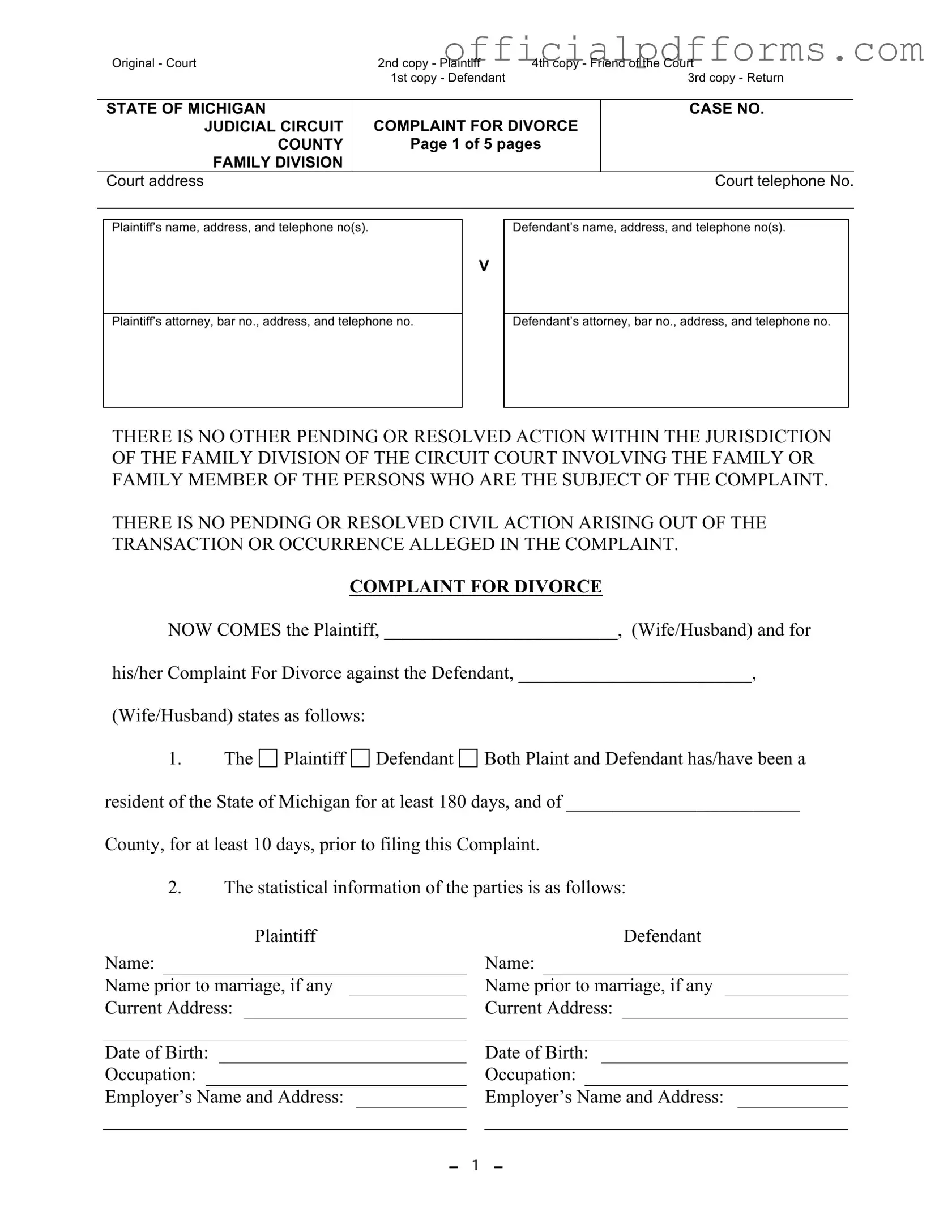The Michigan Complaint Divorce form is a legal document that initiates the divorce process in Michigan. It outlines the details of the marriage, including the names and addresses of both spouses, the date of marriage, and the grounds for divorce. This form is essential for filing a divorce case in the Family Division of the Circuit Court and must be completed accurately to ensure the process moves smoothly.
Who needs to file the Complaint for Divorce?
Typically, the spouse who is initiating the divorce, known as the Plaintiff, must file the Complaint for Divorce. To qualify, the Plaintiff must have been a resident of Michigan for at least 180 days and of the county where the complaint is filed for at least 10 days. If both spouses agree to the divorce, the Defendant may also participate in the filing process, but it is usually the Plaintiff who submits the form.
The form requires various pieces of information, including:
-
Names and addresses of both the Plaintiff and Defendant.
-
Date of marriage and the county where it took place.
-
Details about any minor children, including their names and dates of birth.
-
Information about property ownership and debts.
Completing all sections accurately is crucial, as missing information can delay the process or lead to complications in court.
What happens after filing the Complaint for Divorce?
Once the Complaint for Divorce is filed with the court, the Defendant must be served with a copy of the complaint. This can be done by a process server or a sheriff's deputy. After being served, the Defendant has a specified time to respond to the complaint. If both parties agree on the terms of the divorce, they may proceed with a settlement agreement. If there are disputes, the case may go to court for resolution.
Can I restore my maiden name through the Complaint for Divorce?
Yes, the Complaint for Divorce includes an option for the Plaintiff to request the restoration of their maiden name. If you wish to have your maiden name restored, you need to indicate this on the form. If no request is made, your name will remain as it is after the divorce. This request can be an important consideration, especially for individuals who wish to revert to their pre-marriage identity.
